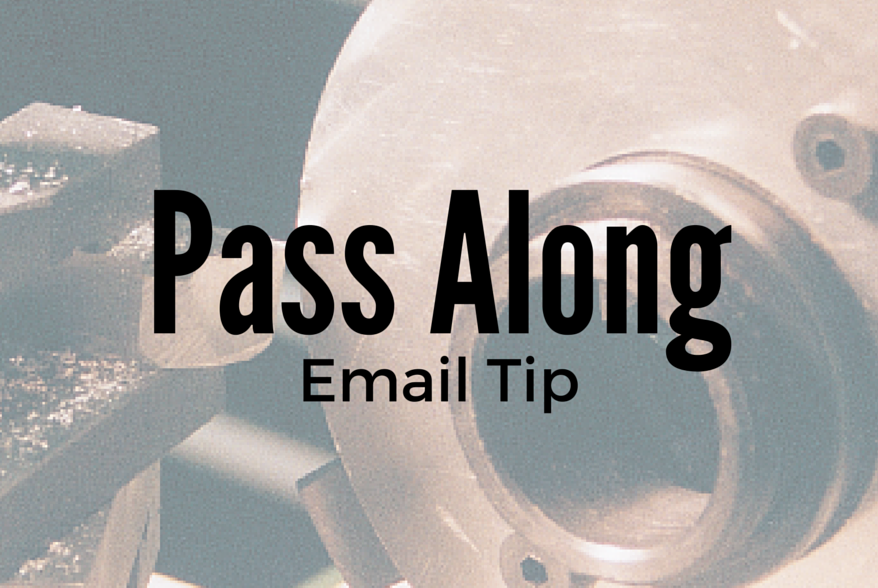by Howie Grunert
If you are anything like me, you have a Digital Read Out (DRO) on your milling machine; here is a trick you may not be aware of that you can use the DRO for. Most DROs have a function called “Bolt Hole Pattern,” where you can assign a center point for a bolt hole pattern, a diameter, start and end angles, and the number of holes. This is great if you are drilling six holes in a circle on a pipe flange, but there is more this function can do for you.
I recently had a job where I needed to make a 4” hole in a No. 12 AWG sheet of stainless steel. I clamped the sheet on the mill, located the center of the hole and programmed the DRO. To rough out the job, I drilled 40 holes in a circle using a 3/8” drill bit, with the edge of each hole .020” inside the 4” diameter. The .020” of clearance is because a drill bit is great for material removal, but doesn’t produce a round, clean hole. I set the bolt hole pattern in the DRO to 40 holes with a diameter of (4.000” – .020” – .020”) – .375” = 3.585”, with a start angle of 0° and end angle of 360°, and drilled the 40 holes.
As this was to be as good a job as possible, I decided I needed to machine a hole every degree for the finish pass. My DRO would only produce a maximum of 100 holes in bolt hole pattern mode, so the DRO was programmed for 90 holes, with a diameter of 4” – .375” = 3.625”, with a start angle of 0° and end angle of 90°. This program was done three more times for each quadrant of the circle. In other words, I used the bolt hole pattern feature to mill out a series of holes, using an end mill to finish the job the drill started; that’s why the drill was held .020” away from the finished edge. The end mill holes overlap quite a bit because there are 360 holes, so they produced an almost perfect edge on the outside of the circle.
This technique can be used for anything, from making five flutes on the edge of a knob to the 400 holes I made to get my job done. You can also use it to produce an outside radius on something, or whatever else your imagination can come up with. A few things to remember: 1) To remove a bulk of the material, drill with a drill bit a series of non-overlapping holes just inside the finished edge, then finish with an end mill. 2) The diameter of the circle must be programmed as the center of the cutting tool, not its outside edge. 3) Finally, use a large diameter end mill for the final cut to get as smooth a finish as possible.
Thanks Howie! Your subscription has been extended by an issue!
Please do us a tremendous favor and share this tip with your machining friends!

